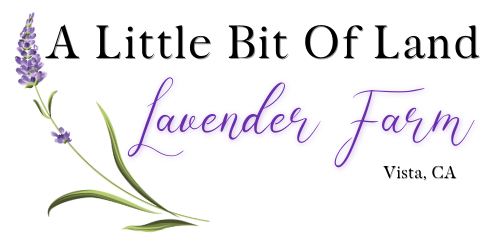Lavender Varieties
Not all lavenders are created equal: there are more than 30 species with over 400 varieties to choose from in the world.
Lavandula angustifolia (English Lavender) is generally hardy and is typically grown for high oil production or culinary use. It is known to have sweeter flowers than other varieties because of a lower level of camphor in the oils.
Lavandula stoechas (Spanish Lavender) is hardy and can handle a harsher summer then English Lavender. It’s the first to bloom in mid-spring and holds its color through late summer. Spanish Lavender is known for its unique blooms, with feathery petals extending from the top of the bloom stalk. It’s not for human consumption, though–this one’s better for cut flowers and attracting pollinators (or people) to our fields.
Lavandula x intermedia is the number one producer in commercial farms. Each variety is a little different, but as a group, they are hardy and they generally produce larger flowers, longer spikes, and exponential yield rates of oil compared to English Lavender.
Do you sell Lavender plants?
Yes we do! Please call ahead for more information and availability.
What is your advice on growing Lavender?
How to Plan Rooted Cuttings
When you bring in your liners (the small starter plants, sometimes called plugs), you’ll need to plan some extra time to grow them out into a 3″ or 4″ pot. Liner roots are established, but they’re small and do not have enough root mass yet to survive the ups and downs of life in the field/garden space.
Plan 4-6 weeks to allow your liners to mature in a 4″ pot, at which time they will be ready to go into the field. When planting the 4″ pot in the field, make sure you are past your frost date, and be sure to plant it right at the dripper head on the drip tape. Dig a hole double the size of your root mass, and make sure that the soil you use for backfill has plenty of coarse ground sand or gravel for drainage. Be sure to plant your lavender at the drip point with fresh soil double the size of your root mass.
Lavender Rotation - Lavender plants can survive for decades, but most commercial farmers rotate older plants out in order to create a consistent yield for their crops.
Field Planning and Soil Conditioning - Because lavender is from the Mediterranean region, it prefers particular growing conditions: a dry and arid environment, lots of sunshine, and a coarse, rocky soil that stays quite dry during the growing season. In a perfect world, lavender would be planted on a south-facing hill (in the northern hemisphere) in a rough soil, giving it quick drainage and lots of sunlight. If your conditions are less than ideal, you’ll need to plan for soil conditioning. Adding coarse sand and gravel will condition the soil for better drainage. Planting on raised beds with groundcover will decrease the amount of saturation due to rain. (A plastic cover on a raised bed will all but stop rain penetration, but it can make it difficult to know moisture concentration for irrigation systems.)
Spacing and Irrigation - Spacing is somewhat determined by the variety you decide to grow, but a good rule of thumb is 2-3 feet between plants, and 4-6 feet between rows.
When is peak Lavender season?
Anytime depending on what you’re looking for and looking to do. We will be having events throughout the year.
Full bloom Lavender generally starts in late June runs through early August. However, if you’re looking for lavender photo opportunities it’s best to come in June through August before most of the lavender is u picked.
Fresh Lavender care?
Once lavender is cut It will last a day or maybe two if kept refrigerated. Sometimes a little longer.
Which Lavender has the best aroma?
All our lavender smells great. But at the end let your nose be the judge.
Can you grow Lavender indoors?
No, lavender is a sun loving plant that needs 6-8 hours of direct sun daily. Even a sunny window will not provide adequate sunlight for lavender.




